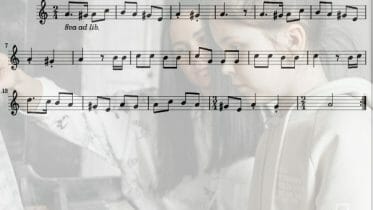
Fum fum fum flauta partitura sheet music – A minor
Sheet music is a prepared form of written or printed music that uses modern musical symbols. It helps
Traditional Catalan sheet music is a significant part of the cultural and artistic heritage of Catalonia, a region in northeastern Spain with a distinct identity and history. This unique musical tradition has its roots in the Middle Ages and has evolved over the centuries, incorporating various influences to create a rich and diverse repertoire. In this article, we will explore the characteristics, history, instruments, genres, and significance of traditional Catalan sheet music. We will delve into its role in preserving cultural identity, its connection to Catalan folklore, and its impact on contemporary music.
Traditional Catalan sheet music exhibits several distinctive characteristics that set it apart from other musical traditions. It often features a melodic and lyrical style, with intricate harmonies and rhythmic patterns. The use of specific modes and scales, such as the Phrygian mode, adds a unique flavor to the music. Additionally, traditional Catalan sheet music frequently incorporates dance rhythms, reflecting the region’s vibrant folk dance culture.
The roots of traditional Catalan sheet music can be traced back to the Middle Ages when troubadours and minstrels traveled across the region, singing and playing musical instruments. These itinerant musicians played a crucial role in the dissemination of songs and melodies, which were passed down orally from generation to generation. In the Renaissance period, the advent of music printing facilitated the preservation and spread of Catalan sheet music.
Various instruments are integral to the performance of traditional Catalan sheet music. The cobla, a traditional ensemble, comprises instruments such as the flabiol (a small flute), the tamborí (a small drum), the tible (a double-reed instrument), and the tenora (a double-reed woodwind instrument). Other instruments commonly used include the guitar, violin, cello, and double bass. Each instrument contributes to the distinctive sound and character of traditional Catalan music.
Traditional Catalan sheet music encompasses a wide range of genres and styles. The sardana, a popular Catalan dance, holds a significant place in the repertoire. It is characterized by a circular formation of dancers accompanied by the cobla. Other genres include the havanera, a style influenced by Cuban music, and the popular Catalan song, which often narrates stories of love, nature, and social issues. Each genre reflects the cultural, historical, and social context of Catalonia.
Traditional Catalan sheet music plays a vital role in preserving the cultural identity of Catalonia. It serves as a means of transmitting collective memory, as many songs and melodies are deeply rooted in Catalan folklore and history. The music acts as a cultural bridge, connecting past generations with the present and providing a sense of continuity. Furthermore, traditional Catalan sheet music has influenced contemporary Catalan composers and musicians, who incorporate elements of this heritage into their work.
Traditional Catalan sheet music continues to inspire and influence contemporary musicians and composers. Many artists draw from the rich heritage of Catalan music, integrating traditional elements into their compositions. This fusion of traditional and modern styles has led to the emergence of innovative and diverse music, bridging the gap between the past and the present. The popularity of traditional Catalan sheet music festivals and performances showcases its enduring appeal and relevance.

Sheet music is a prepared form of written or printed music that uses modern musical symbols. It helps